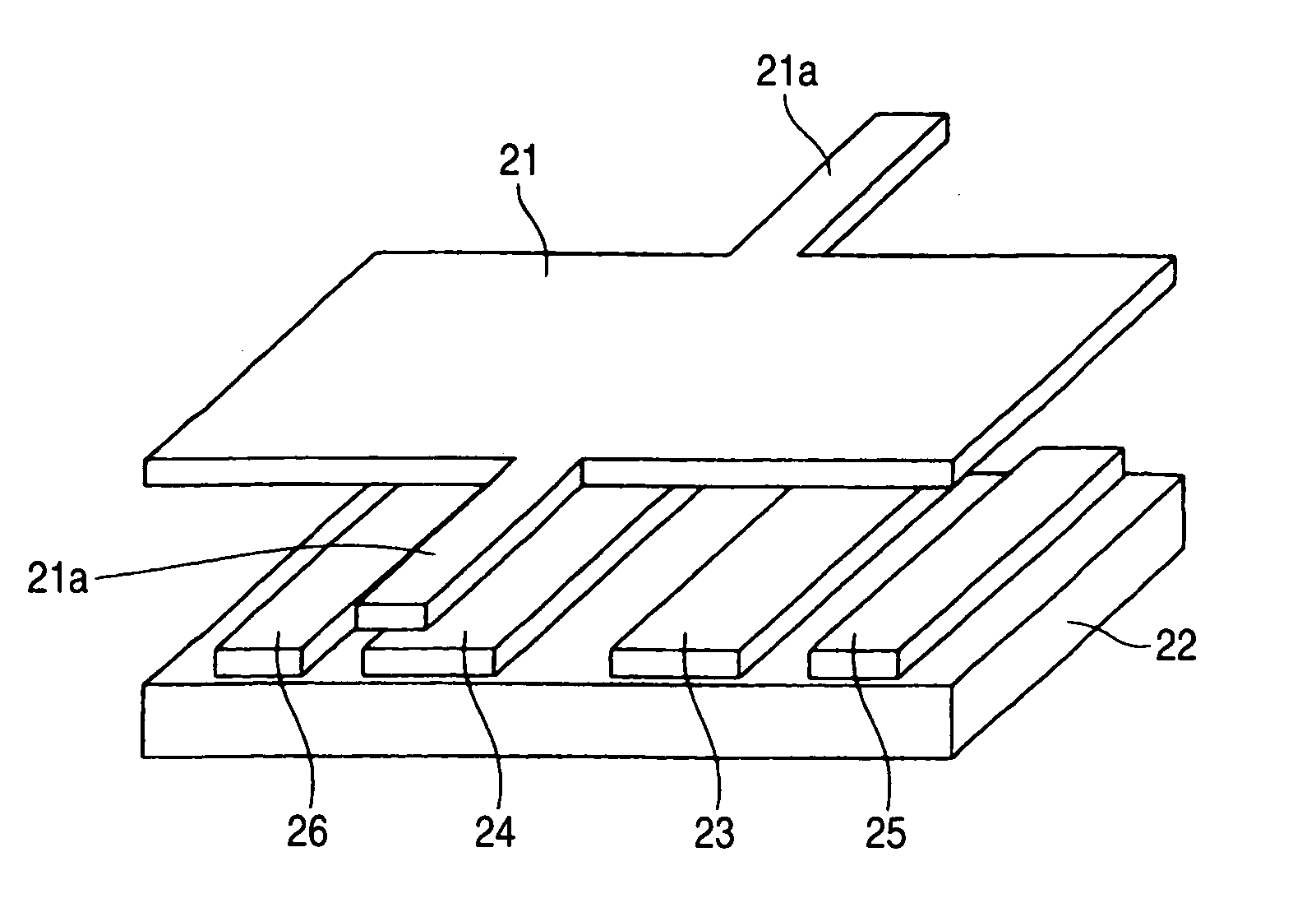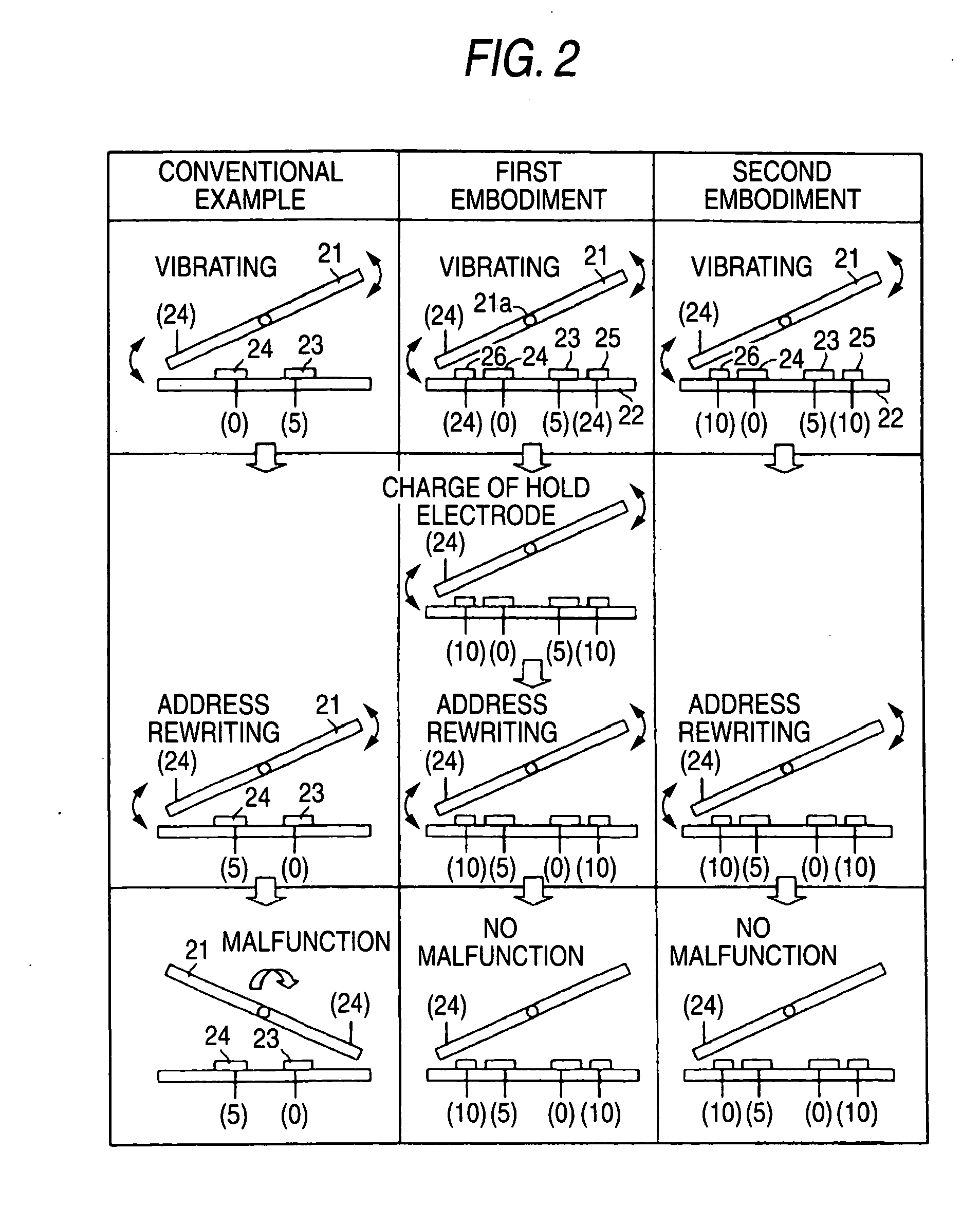Microelectromechanical device array and method for driving the same
a micro-electromechanical and array technology, applied in static indicating devices, instruments, optics, etc., can solve the problems of difficult to tilt the movable mirror, the micro-electromechanical device array has difficulty in operating at high speed, and the light reflection cannot be performed in the left-tilting state, etc., to achieve the effect of high speed
- Summary
- Abstract
- Description
- Claims
- Application Information
AI Technical Summary
Benefits of technology
Problems solved by technology
Method used
Image
Examples
first embodiment
(First Embodiment)
[0040]FIG. 1 is a schematic drawing that illustrates one microelectromechanical device drawn from among an array of microelectromechanical devices that constitute a microelectromechanical device array according to a first embodiment of the present invention. movable portion (hereinafter referred to as a “movable mirror”) 21 of the microelectromechanical device array in this embodiment is supported in a space by extending a hinge 21a between two supporting rods (not shown) formed on the surface of a semiconductor substrate 22, so that the movable mirror 21 can swing. Fixed electrode films (hereinafter referred to as a “Fixed electrode films”) 23 and 24 are formed on the surface of the semiconductor substrate 22 facing the back surface of the movable mirror 21.
[0041] As illustrated in FIG. 1, the fixed electrode film 23 is formed at the position facing the right part of the back surface of the movable mirror 21 with respect to the hinge 21a thereof, whereas the fixe...
second embodiment
(Second Embodiment)
[0055] The right column in FIG. 2 illustrates a method for driving a microelectromechanical device array according to a second embodiment of the invention. In the first embodiment mentioned above, the bias voltage Vb is 24V when the process reaches zone E. At this time, the same voltage of 24V as the bias voltage Vb is applied to the hold electrode films 25 and 26. Thereafter, the hold voltage to be applied to the hold electrode films 25 and 26 is reduced to 10V before performing address rewriting (i.e., the rewriting of the voltage Va).
[0056] On the other hand, in this embodiment, a hold voltage of 10V is always applied to the hold electrode films 25 and 26 without changing the hold voltage to be applied to the hold electrode films 25 and 26. According to this method, there is no fear that the movable mirror 21 will cause a malfunction even when address rewriting is performed while the movable mirror 21 is vibrating as in the first embodiment.
[0057] In each emb...
PUM
 Login to View More
Login to View More Abstract
Description
Claims
Application Information
 Login to View More
Login to View More - R&D
- Intellectual Property
- Life Sciences
- Materials
- Tech Scout
- Unparalleled Data Quality
- Higher Quality Content
- 60% Fewer Hallucinations
Browse by: Latest US Patents, China's latest patents, Technical Efficacy Thesaurus, Application Domain, Technology Topic, Popular Technical Reports.
© 2025 PatSnap. All rights reserved.Legal|Privacy policy|Modern Slavery Act Transparency Statement|Sitemap|About US| Contact US: help@patsnap.com



